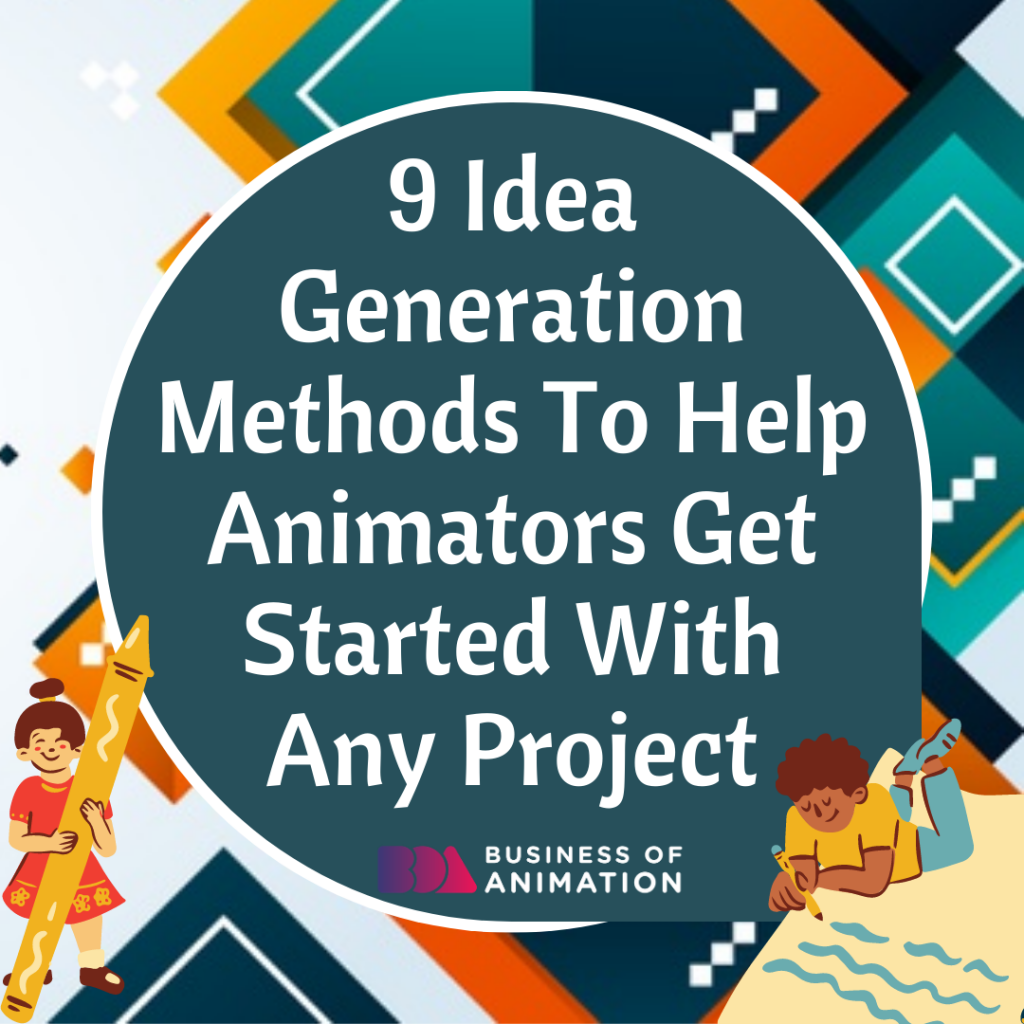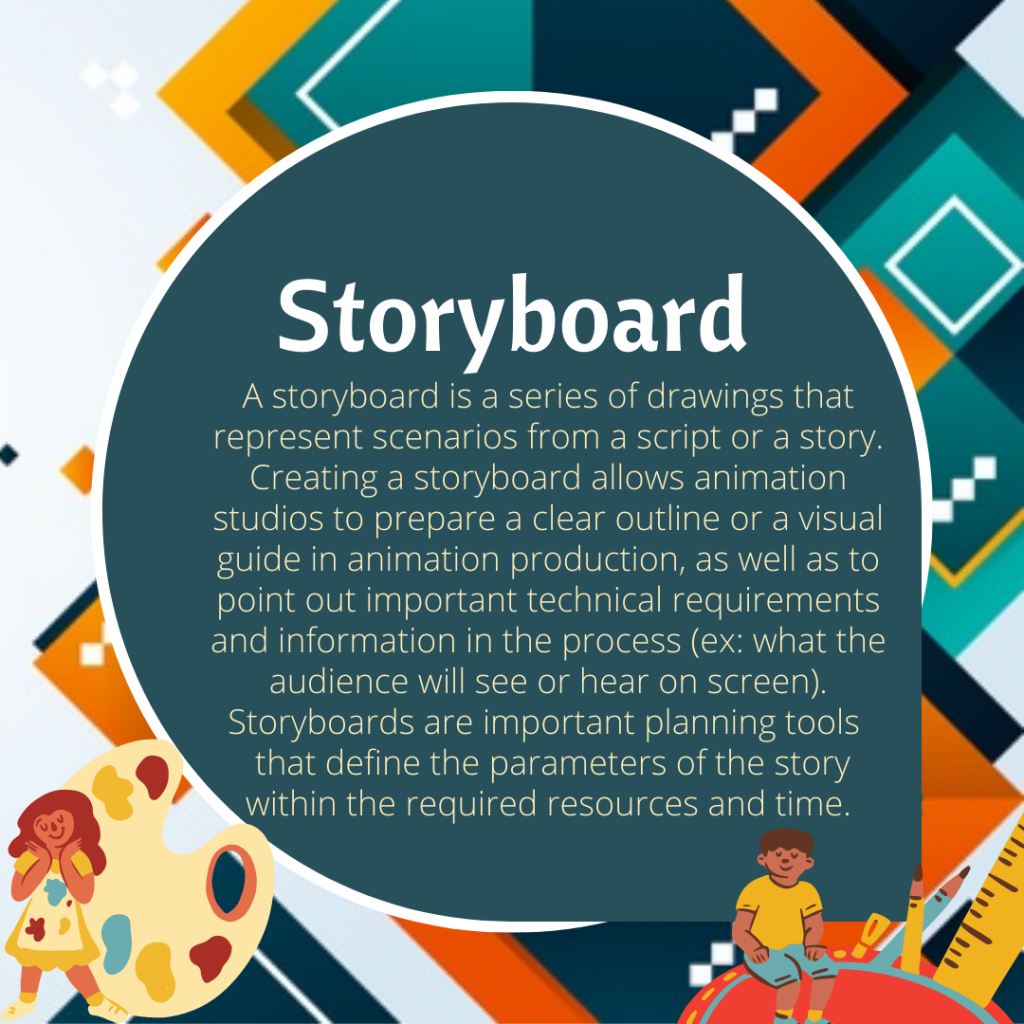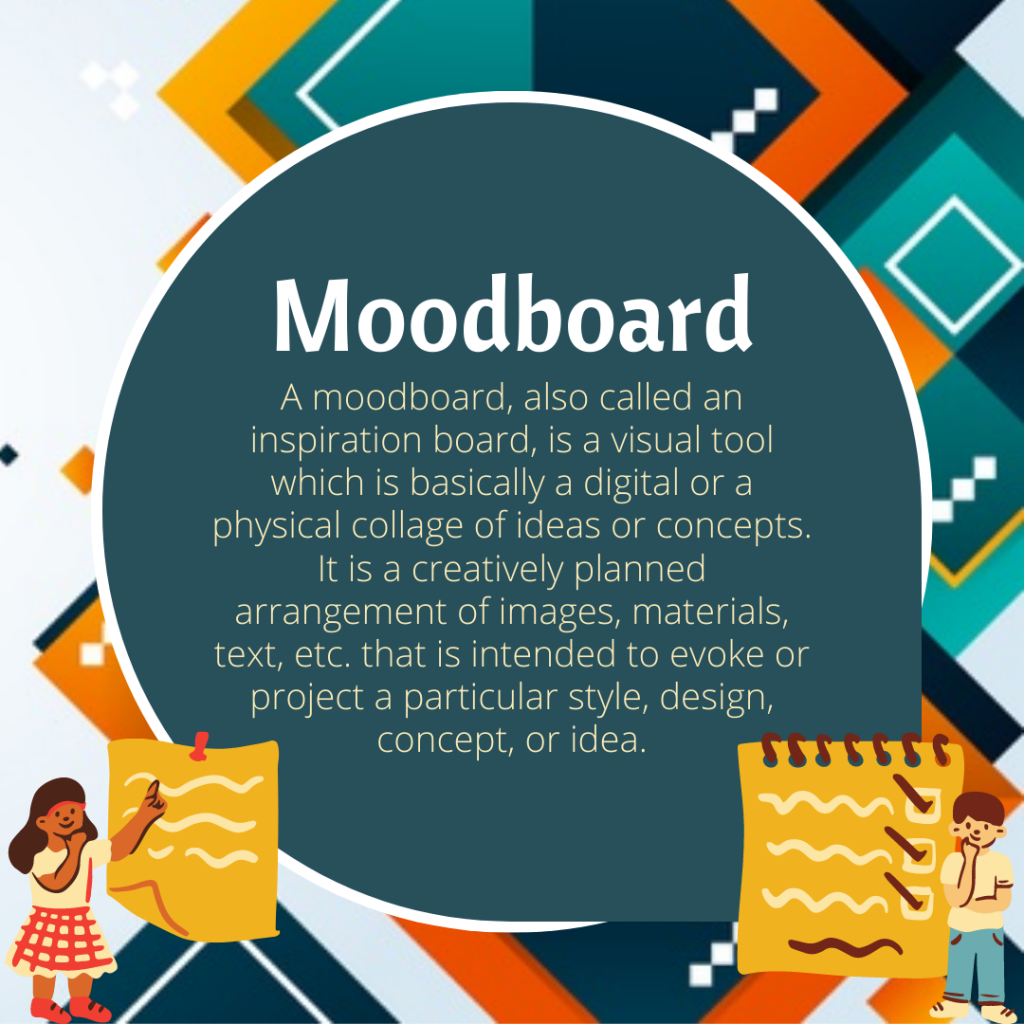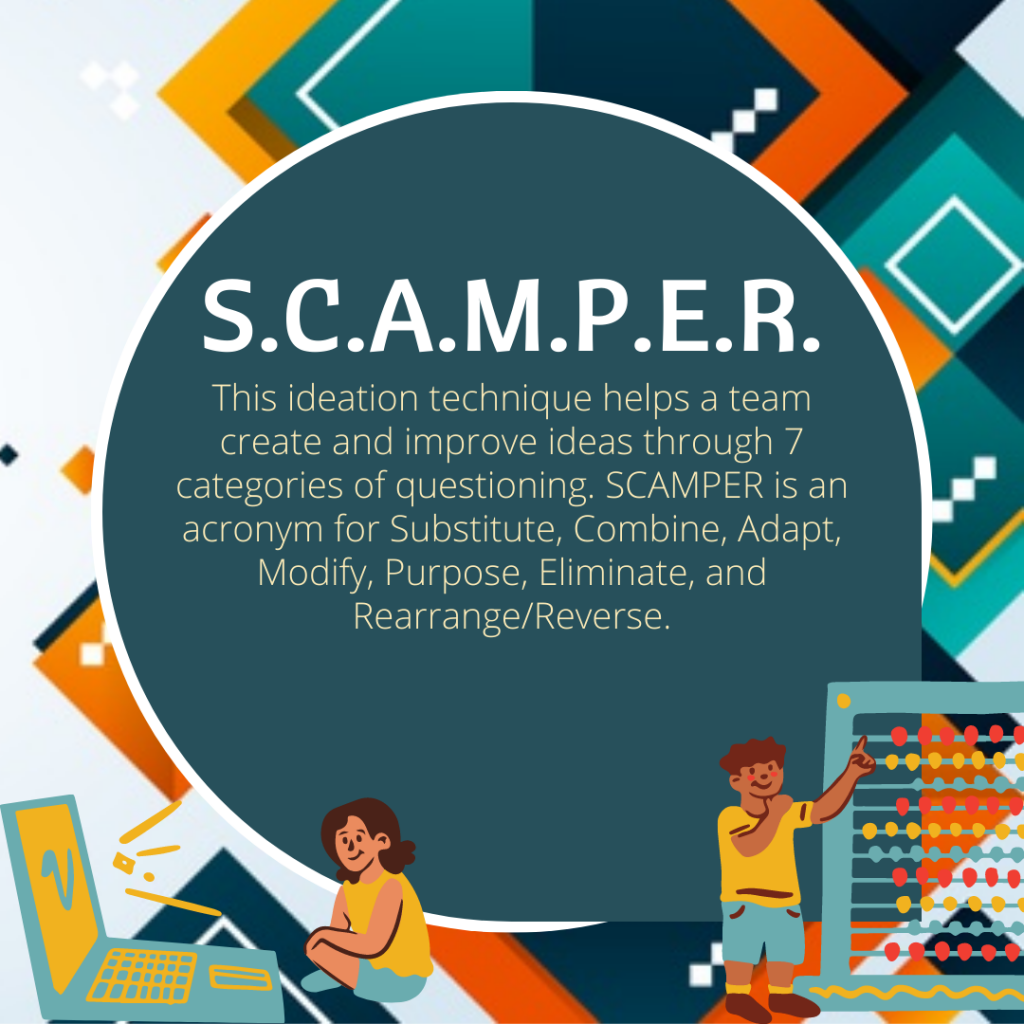In animation or any creative field, creating ideas is a daily requirement. Making good ideas takes a lot of time and inspiration. Demands also put you under pressure just to cope with them.
Here are 9 idea generation methods to help animators get started with any project:

1. Brainstorming

Brainstoming sessions are usually done in groups (but also done individually) where people share their ideas (as many as they can) in a free-thinking environment. When you take notes or write those ideas down on a medium for later reference, it's called braindumping. Over the years, this technique is modified producing new methods to generate more fresh ideas.
2. Brainwriting

Brainwriting is a modified form of brainstorming where 6 people write down 3 ideas in 5 minutes. Hence, also called 6-3-5 method. This involves a process where people will write their ideas individually on paper then pass it on to other members for them to improve and elaborate on, add more ideas to the list, or get inspiration from to create new ideas.
3. Brainswarming

Brainswarming is basically brainwriting and mind mapping (another good ideation method) done in multiple sessions until the problem is solved, imitating a swarm-like effect. This is done using a problem-solving graph or a mind map drawn or constructed with sticky notes on a whiteboard. The problem or goal is usually written at the top then the members will write solutions or "resources" below, which would later be analyzed and linked together to form the best possible solutions or ideas.
4. Trial and Error

Trial and error is a fundamental step to every experimentation process. Although this takes time, working on a computer is one good way of doing this since you can just "undo" anything while mixing and matching different elements together until you make the best combination.
5. Sketch

Sketching, either done individually or collaboratively, allows members to present and communicate their ideas visually through rough but comprehensible sketches or diagrams. This method does not necessarily require top-notch drawings. Being able to portray an idea through sketches can help the team make it more improved and definite using visual details.
6. Storyboard

A storyboard is a series of drawings that represent scenarios from a script or a story. Creating a storyboard allows animation studios to prepare a clear outline or a visual guide in animation production, as well as to point out important technical requirements and information in the process (ex: what the audience will see or hear on screen). Storyboards are important planning tools that define the parameters of the story within the required resources and time.
7. Moodboard

A moodboard, also called an inspiration board, is a visual tool which is basically a digital or a physical collage of ideas or concepts. It is a creatively planned arrangement of images, materials, text, etc. that is intended to evoke or project a particular style, design, concept, or idea.
8. S.C.A.M.P.E.R.

This ideation technique helps a team create and improve ideas through 7 categories of questioning. SCAMPER is an acronym for Substitute (What elements of this idea or process can we substitute?), Combine (How can we combine this with other ideas or processes?), Adapt (What idea from elsewhere can we alter or adapt?), Modify (How can we greatly enlarge or greatly reduce any component?), Purpose (What completely different use can we have for our idea?), Eliminate (What elements of the idea can be eliminated?) and Rearrange/Reverse (How can we rearrange the ideas or reverse the process?).
9. Analogy and Juxtaposition

Analogy is a literary device for connecting or comparing two similar (sometimes very different) things to determine a relationship or resemblance between them. Metaphors and similes are examples of analogies. Similarly, juxtaposition is placing two or more things side by side to emphasize a concept or bring out mystical and artful blending of different elements. Although both are directly or indirectly involved in every ideation technique, both were added to the list due to their relevance and broad scope of use.
Check out Business of Animation's blog for more in-depth tips on how to grow your animation business!



